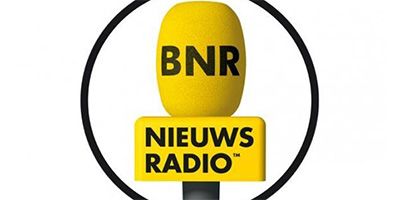
It is likely the most important choice made this week: more than 10 million Dutch people chose who may represent them in the House of Representatives for the next four years. But how consciously is this choice made?
As seasoned psychologists and neuromarketing researchers, we at Unravel are constantly engaged in describing, analysing, interpreting, and predicting the unconscious - the irrational. But voting is, of course, a purely rational choice: the moment you unfold the origami ballot paper, it should primarily be your rational brain determining which of the 642 options should be marked red. No unconscious influence comes into play - at most, the length of the list of candidates from a party. Right?
In the run-up to election day, however, unconscious influences are omnipresent. The psychological techniques politicians use to persuade voters have been described in this blog before. For instance, the spots cleverly utilise both positive and negative emotions, and politicians seize every opportunity to unconsciously strengthen identification with the voter.
But how can we uncover the impact of these unconscious emotions against such a rational choice? Can we predict the stated preference - and thus the election outcome - with our measurements of the irrational choice centre: the brain?
Predicting Elections Explained
We have created a short and practical explainer video for you from the key insights of this blog. You can watch it below.
Who Polls Best?
Predicting the outcome is a race against the clock - and each other - every year. While Dutch pollster Maurice de Hond comes up with a new poll (and corona trivia) every week, various methods have been employed in the past to predict the results on a more behavioural basis. Classical polls are not perfect, after all. They struggle with representativeness of society, social desirability, and other voter biases (Zhou et al., 2021).
A growing movement is the application of Machine Learning on Big Data collected from Twitter and other social media. This is becoming increasingly important: the number of tweets combined with the sentiment expressed about parties in these 140 characters could predict elections in various countries, such as Germany (Tumasjan et al., 2010), Malaysia, India, Pakistan (Jaidka et al., 2019), and the Netherlands (Sanders and van den Bosch, 2019).
A method that relies more on the unconscious motivation of voters is the Implicit Association Test (IAT). This was able to predict the outcome of a Swiss referendum (Raccuia, 2016) and during Italian elections (Roccato and Zogmaister, 2010).
Testing was also done with measurements of the unconscious choice centre: the brain. This neuro-method has already proven its initial value: the brain's reaction to seeing the face of the party leader could predict the election outcome in the Italian elections (Vecchiato et al., 2009).
It is clear that alongside traditional polls, various measurement methods that measure the unconscious experience can be a valuable addition to the rather rigid measurement method that currently dominates the media.
Can a Rational Choice Be Predicted by Unconscious Emotions?
For various applications, we see that measuring unconscious emotions is a good reflection of behaviour. By measuring brain activity while watching commercials, we can, for example, predict sales and also the personal preference of the respondent.
However, during the purchase of most products, many influencing factors are present, while in the voting booth, these are eliminated as much as possible. This could mean that this explicit preference cannot be well predicted because you assume you are actually voting based on explicit preference. On the other hand, the campaigns before you enter the voting booth are, of course, convincing and could still cause you to lean more than you can rationally explain.
We therefore put the commercials of various political parties on the neuro-test bench and compare them with the election results. In the week leading up to the elections, we received 22 respondents in our living room lab and showed them a commercial block with commercials from nine Dutch parties: CDA, ChristenUnie (CU), D66, Forum for Democracy (FVD), Groenlinks (GL), PVDA, PVV, SP, and the VVD.
During this research, we fitted the respondents with an EEG to measure their brain activity. And the relationship of both with the actual election result is undeniable!
The Votes Are Counted... and the Brain Activity Measured!
At the time of publication, the very last votes of the 2021 House of Representatives elections are being counted. Time to take stock of these different methods and their predictive value for the actual result. Let's look at the results!
From the brain activity of the respondents while watching the political commercials, we calculate various metrics. The most important is our frequently used metric desire, which is also predictive of sales and product choice. We compared this with the number of seats, and what turns out? The predictive value of our desire measurement is 71.38% (p=.003).

But what about the explicit measurements? For that, we look at the polls from 7 March: these predicted that VVD would remain the largest (32 seats) followed by PVV (24 seats) and CDA (17 seats). The predictive value of this poll turns out to predict 72.04% of the variance within the seats (p=.002). The brains of just 22 respondents predict the election outcome as well as polls do!
This means that a week before the elections, the outcome could be predicted just as well with neuro-measurements as with the renowned polls of peil.nl. But what are the pros and cons of these two methods?
What Is the Difference?
First, there is the group size. Maurice de Hond's panel consists of 3000 respondents who have voluntarily signed up every week. It is important that these are evenly distributed across society to give a representative picture.
The EEG research can be successfully conducted with 20 respondents and has no requirement for the target group: the results can be well generalised to a larger group. How is it possible that so few brains say so much? The brain reveals not only the ultimate party choice of the respondent but also how each party is neurally 'positioned in the market'.
We Were Surprised Too
Although we expected brain activity to have predictive value in election outcomes, we ourselves did not expect a 71% explained variance based on a single metric.
Where neuromarketing research has proven itself well as a method to predict what you put in your shopping basket at the supermarket, voting is a more conscious process than your soft drink preference in the store. This would suggest that conscious polls might better predict the outcome than a brain measurement of (unconscious) emotion. Yet we see that our neural data has extraordinarily high predictive value and that political preferences can certainly be predicted from brain activity. Even for (seemingly) conscious choices, neurodata reveals surprisingly much.
On to the next elections!
References
Jaidka, K., Ahmed, S., Skoric, M., & Hilbert, M. (2019). Predicting elections from social media: a three-country, three-method comparative study. Asian Journal of Communication, 29(3), 252-273.
Raccuia, L. (2016). Single-Target Implicit Association Tests (ST-IAT) predict voting behavior of decided and undecided voters in Swiss referendums. PloS one, 11(10), e0163872.
Roccato, M., & Zogmaister, C. (2010). Predicting the vote through implicit and explicit attitudes: A field research. Political Psychology, 31(2), 249-274.
Sanders, E., & van den Bosch, A. (2019, November). A Longitudinal Study on Twitter-Based Forecasting of Five Dutch National Elections. In International Conference on Social Informatics (pp. 128-142). Springer, Cham.
Tumasjan, A., Sprenger, T., Sandner, P., & Welpe, I. (2010, May). Predicting elections with twitter: What 140 characters reveal about political sentiment. In Proceedings of the International AAAI Conference on Web and Social Media (Vol. 4, No. 1).
Vecchiato, G., Toppi, J., Cincotti, F., Astolfi, L., Fallani, F. D. V., Aloise, F., ... & Babiloni, F. (2010, January). Neuropolitics: EEG spectral maps related to a political vote based on the first impression of the candidate's face. In 2010 Annual International Conference of the IEEE Engineering in Medicine and Biology (pp. 2902-2905). IEEE.
Zhou, Z., Serafino, M., Cohan, L., Caldarelli, G., & Makse, H. A. (2021). Why polls fail to predict elections. arXiv preprint arXiv:2101.11389.


 EN
EN  NL
NL 




